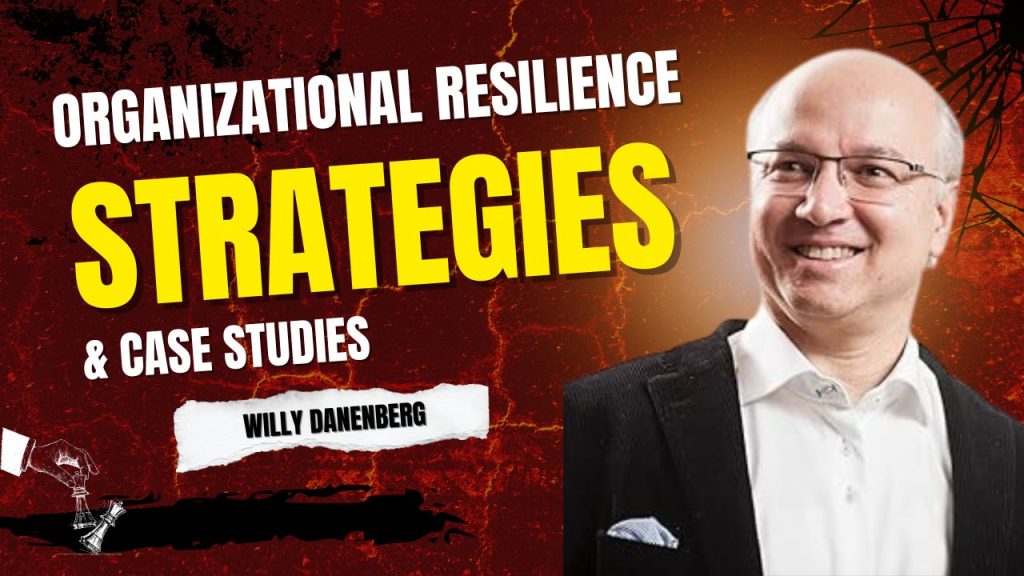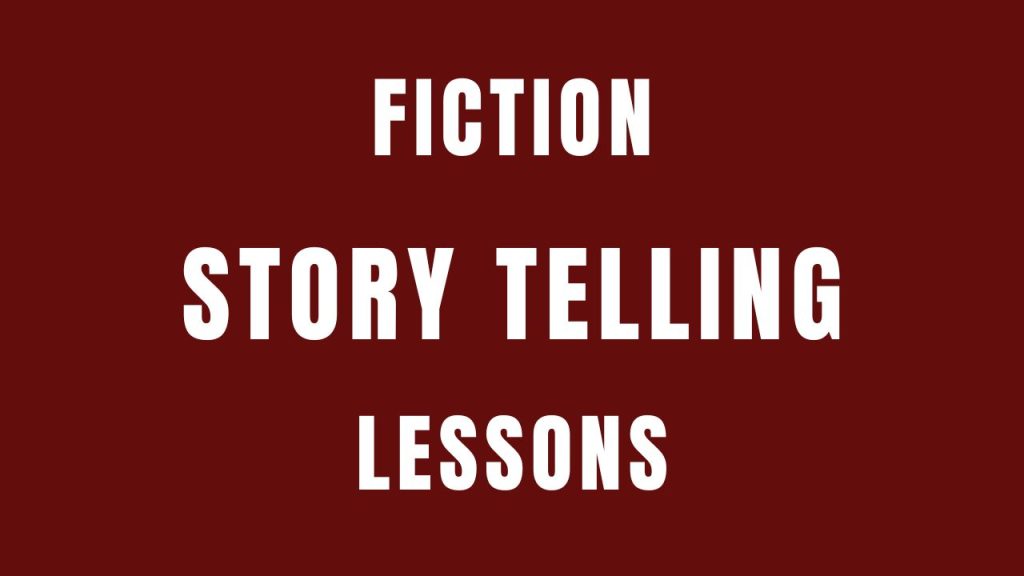Organizational Resilience in Action: Strategies, Case Studies, and Expert Insights for Thriving in Disruption

Introduction
In today’s rapidly changing business environment, organizational resilience has become a critical success factor. Companies across industries face mounting challenges-rising cybersecurity threats, stricter regulatory compliance, unpredictable supply chain disruptions, and the relentless pace of digital transformation. To survive and grow, organizations must build the ability to adapt, recover, and thrive in the face of disruption.
With over 35 years of global leadership experience, Willy has worked in industries such as manufacturing, banking, insurance, and supply chain management. Throughout his career, he has helped organizations embrace transformation, strengthen resilience, and achieve sustainable growth. His unique perspective combines real-world practice with strategic insights, making him a trusted guide for businesses navigating complex change.
As the author of 20 influential books, Willy has shared his expertise on critical topics like Project Management Offices (PMO), DevOps, cybersecurity, compliance, adaptability, and data protection. These publications provide leaders with practical frameworks and proven strategies to improve performance, safeguard operations, and accelerate digital success.
This article draws on Willy’s journey and extensive body of work to deliver a clear roadmap for building organizational resilience in the digital age. Whether you are a business leader, project manager, or IT professional, the insights shared here will help you strengthen adaptability, reduce risks, and build a future-ready organization.
What is Organizational Resilience?
- Organizational resilience is more than just a business buzzword-it’s the ability of a company to anticipate challenges, prepare for risks, respond effectively, and quickly adapt to disruptions. These disruptions may come from shifting markets, rapid technology changes, economic downturns, or sudden crises like cyberattacks.
- A resilient organization doesn’t just survive unexpected challenges-it uses them as opportunities to grow stronger and more competitive.
Here are the key elements of building organizational resilience:
⬤ Strategic Alignment – Every project, initiative, or investment should connect directly to the company’s long-term vision and goals. This ensures that resources are not wasted and that the organization remains focused even in uncertain times.
⬤ Operational Flexibility – Companies that have agile systems, adaptable processes, and cross-functional teams can pivot quickly when challenges arise. Flexibility reduces downtime and keeps businesses moving forward despite obstacles.
⬤ Cybersecurity Strength – In today’s digital-first world, protecting your data, networks, and business operations is non-negotiable. Strong cybersecurity safeguards an organization from financial loss, reputational damage, and operational breakdowns.
⬤ Cultural Adaptability – True resilience starts with people. By encouraging a culture of innovation, learning, and continuous improvement, organizations empower employees to embrace change instead of resisting it.
In short, organizational resilience is the foundation of long-term business success. Companies that invest in resilience not only survive disruptions-they turn them into opportunities for growth.

The Role of Leadership in Driving Organizational Resilience
Strong leadership is the foundation of building resilience in any organization. Without clear direction and vision from leaders, even the most advanced systems and strategies can fail. Leadership is not just about managing people-it is about driving change, inspiring teams, and ensuring that the company stays aligned with its long-term goals.
Willy, in his book Mastering the Project Management Office (PMO), explains how leaders and PMO executives can transform disconnected projects into a strategic delivery engine. Instead of running separate initiatives with no clear connection, a well-led PMO ensures that every project supports the company’s bigger vision.
Real-World Example
A global banking organization faced strict regulatory pressure and frequent compliance issues. By reorganizing its PMO using Willy’s frameworks, the bank created stronger alignment between projects and overall strategy. Within just 18 months, the company reduced project failure rates by 35% and became better prepared for compliance audits.
Key Takeaway: Leaders are the true change agents. They must guide their organizations with clarity, adaptability, and vision, especially in times of uncertainty. A resilient leader not only responds to disruptions but also turns challenges into opportunities for growth.
Why Leadership Matters for Organizational Resilience
⬤ Vision and Direction – Leaders provide a clear roadmap for where the organization is heading.
⬤ Inspiring Teams – Strong leadership builds confidence and motivates employees to adapt to change.
⬤ Strategic Alignment – Leaders ensure every initiative supports long-term business goals.
⬤ Crisis Readiness – During disruptions, leaders set the tone and provide stability.
Digital Transformation and DevOps: From Fragmentation to Standardization
Digital transformation succeeds only when organizations move beyond isolated tools and adopt a holistic enterprise-wide framework. In DevOps & DevEx, Willy explains how scaling DevOps and SRE (Site Reliability Engineering) across multiple teams and regions helps organizations achieve speed, security, and standardization.
Key Benefits of Enterprise DevOps
⬤ Faster and more reliable innovation cycles
⬤ Stronger system performance and uptime
⬤ Standardized and secure IT operations
⬤ Lower compliance and regulatory risks
Real-World Example: Financial institutions that embraced enterprise DevOps reported 50% faster release cycles while still meeting strict compliance requirements.
SEO Takeaway: Adopting enterprise DevOps strategies allows companies to innovate quickly while maintaining security and compliance standards.
Cybersecurity & Compliance: Building Digital Fortresses
In today’s landscape, cybersecurity and compliance are no longer optional-they are the foundation of digital resilience. As cyber threats evolve, Willy’s Ransomware Exposed provides real-world insights into ransomware incidents, while Backup, Restore & Data Synchronization stresses the importance of compliance with global frameworks like ISO 27001, GDPR, DORA, and NIS2.
Practical Steps to Strengthen Cybersecurity
⬤ Regularly back up business-critical data in secure, isolated environments
⬤ Conduct employee training on phishing and social engineering attacks
⬤ Build compliance-driven IT architecture to reduce legal and operational risks
⬤ Create and test incident response playbooks for ransomware and cyberattacks
SEO Takeaway: Organizations that combine cybersecurity best practices with compliance frameworks are better equipped to resist attacks and safeguard long-term business continuity.
Adaptability as a Competitive Advantage
Resilience extends beyond technology-it’s rooted in people and culture. In Change Instinct: Mastering the Art of Adaptability, Willy emphasizes how organizations can embed adaptability and continuous improvement to remain competitive in uncertain times.
Practical Example:
⬤ A global supply chain company adopted Willy’s adaptability framework, replacing rigid annual plans with rolling quarterly strategies. The result: greater responsiveness and a 20% reduction in operational bottlenecks.
Takeaway: Building a culture of adaptability ensures organizations can pivot quickly, seize opportunities, and sustain long-term success.

Fiction, Storytelling, and Lessons in Resilience
Resilience isn’t confined to boardrooms and technical frameworks-it also lives in the stories we tell. Willy brings this perspective into fiction through Queen Esther’s Secret – The Final Awakening. Available in multiple languages, the book weaves history and spirituality into a powerful narrative, showing how ancient wisdom can inform modern resilience.
Insight: Storytelling provides a human dimension to resilience, helping leaders and readers alike connect emotionally with the principles that drive strength and endurance.
Case Studies & Real-World Lessons in Building Resilience
The best way to understand organizational resilience is by looking at real examples. Case studies reveal how companies across industries used resilience strategies to overcome challenges, recover quickly, and build long-term strength. Here are a few practical lessons:
⬤ Banking Transformation with PMO Alignment
Banks deal with complex regulations and multiple ongoing projects. In this case, the bank was struggling with disconnected projects and weak compliance processes. By introducing a strategic Project Management Office (PMO) framework, they created alignment between strategy and execution.
Result: A 35% drop in failed projects, stronger compliance, and smoother coordination across teams.
⬤ Cybersecurity Breach Response
A mid-sized company was hit by a ransomware attack that locked critical business data. Instead of panicking, they followed a structured data synchronization and restoration blueprint.
Result: Full recovery within just 48 hours, while also staying fully compliant with regulatory standards. This example shows how cyber resilience is not just about defense-it’s about recovery speed and business continuity.
⬤ Adaptability in Supply Chain Management
Global supply chains are often shaken by unexpected events like natural disasters, trade disruptions, or political instability. One global company adopted a rolling strategy and adaptability model instead of rigid annual planning.
Result: Faster response times, reduced downtime, and the ability to keep operations running even during global crises.
These case studies prove that resilience is not theory-it’s a practical business advantage. Companies that invest in PMO alignment, cybersecurity, and adaptability are more likely to survive disruptions and grow stronger afterward.
Frequently Asked Questions (FAQs) About Resilience
Q1. What makes organizational resilience different from business continuity?
Business continuity focuses on short-term recovery after a disruption, while organizational resilience is about long-term adaptability and sustainable growth. Resilience prepares companies not only to survive challenges but also to use them as opportunities to improve.
Q2. How can leaders begin building resilience in their organizations?
Start small but strategic:
⬤ Align business strategy with daily operations through a PMO framework
⬤ Invest in cybersecurity systems and disaster recovery plans
⬤ Build a culture where employees value adaptability and continuous improvement
Q3. Which industries benefit most from DevOps at scale?
Industries where compliance and security are critical benefit the most-such as banking, insurance, and critical infrastructure. DevOps at scale helps these industries deliver faster, stay compliant, and strengthen IT resilience.
Q4. How do regulations like GDPR and DORA affect resilience?
Regulations like the General Data Protection Regulation (GDPR) and the Digital Operational Resilience Act (DORA) are not just about compliance. They enforce operational discipline, stronger data protection, and reduced vulnerabilities, making businesses more resilient to cyber threats and system failures.
Q5. Can resilience be taught to employees?
Absolutely. Resilience is not only a system-it’s a mindset. Leaders can train employees through:
⬤ Workshops and training programs
⬤ Leadership role modeling (when leaders demonstrate adaptability, teams follow)
⬤ Daily practice of adaptability, such as flexible planning and learning from challenges
Conclusion: Building Resilience for the Future
In today’s fast-changing world, success is no longer defined by short-term wins but by the ability to adapt, recover, and grow stronger after every disruption. Resilience has become the single most important skill for organizations and leaders who want to stay competitive.
From project management and DevOps to cybersecurity and adaptability, Willy’s work shows that resilience is not just a strategy-it’s a mindset and a culture. Organizations that embed resilience into their daily operations are the ones that:
⬤ Respond faster to crises
⬤ Protect customer trust through stronger systems
⬤ Save costs by reducing risks and inefficiencies
⬤ Inspire their teams to innovate and adapt
Willy’s 20+ books and resources provide leaders, entrepreneurs, and professionals with the exact frameworks they need to navigate uncertainty with confidence.
Why Willy’s Insights Matter
What makes Willy’s approach unique is that he connects business strategy, technology, psychology, and storytelling. This means his lessons are not only practical but also easy to apply in real-world scenarios.
For example:
⬤ In Mastering the PMO, leaders learn how to align projects with business outcomes instead of drowning in processes.
⬤ In DevOps & DevEx, he explains how enterprises can scale securely while keeping operations agile.
⬤ In Ransomware Exposed, readers uncover the hidden tactics of modern cybercriminals and learn how to defend against them.
⬤ In Change Instinct, he shows that adaptability is a competitive advantage that drives growth.
⬤ Even in The Compliance Trap, a fictional cyber-thriller, Willy weaves in real lessons on business resilience and regulatory risk.
This mix of frameworks, case studies, and stories makes his work stand out and keeps it relevant for both business leaders and individuals.
Ready to Strengthen Your Organization?
Resilience is not built overnight-it’s a journey. The sooner you start, the stronger your business will be when the next disruption arrives.
Explore Willy’s complete collection of books on Amazon to gain proven strategies for:
⬤ Building resilient teams and organizations
⬤ Securing your business against cyber risks
⬤ Driving continuous improvement with adaptability
⬤ Turning compliance into a business advantage
⬤ Leading with confidence in uncertain times
Whether you’re a CEO, project manager, IT leader, entrepreneur, or student, Willy’s resources offer practical steps you can apply immediately.
